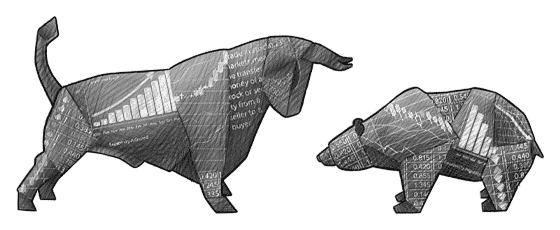Stop thinking like the crowd
14 July 2022

Hi, The Investor’s Podcast Network Community!
Welcome back to We Study Markets!
Investors didn’t love the June inflation report (neither did the rest of America), and the S&P 500 finished down for the third day in a row yesterday.
Markets are set for an even worse day today, and they are now pricing in an 80% chance of a 100 basis point hike this month by the Federal Reserve.
Not a great start to earnings season 🤕
Today, we’ll also be discussing Howard Marks’ second-level thinking, how to take advantage of bear markets, inverted yield curves, hot dog prices, and much more, in just 4.5 minutes to read.
Read on 📖
IN THE NEWS
❗ With high inflation, food, housing, and electricity increases stand out in particular (WSJ)
Explained:
- While markets have been digesting yesterday’s June inflation report, the prospect for everyday consumers is even bleaker. Grocery prices have risen at their fastest rate since 1979 following a 12.1% annual increase. In particular, margarine has risen 34.5%, 16.3% for hot dogs, and 14.7% for cookies.
- If food price increases weren’t bad enough, rent rose 5.8% in June from a year ago and energy prices are up 41.6%. On the bright side, a few things like hotel rates, airfare, and televisions declined in June from May.
What to know:
- Inflation has very real effects on financial markets and the pricing of assets, and much of this is, in part, driven by expectations of behaviors from real-life people. Some of these numbers may just look like digits on a screen, but it’s important to remember that millions are now seeing their standard of living materially deteriorate.
- If necessary things like housing, electricity, and food staples keep escalating at these paces, many will be forced to increasingly change their lifestyle, and with that will come no shortage of social and political tension which will also carry through into financial market uncertainty.
💰Can you afford your ideal life? (Fortune)
Explained:
- In a recent Harris Poll, 61% of both Gen Z and Millennials said they lacked confidence in obtaining their dream life, and 53% said they were likely to pass on big-ticket items, like vacationing or attending family events, due to inflation.
- In another study, half of Millennials reported they felt their finances would keep them from getting what they want in life, while 75% of Gen Z claimed they were just scraping by financially. A Deloitte report found that half of both generations were living paycheck to paycheck.
What to know:
- This outlook makes sense. Millennials graduated and entered the workforce during the Great Recession of 2008 which created a major roadblock to building a career and acquiring wealth. Since then, they’ve faced soaring home prices, stagnant wage growth, and the burden of student loans.
- Gen Z hasn’t had it much better as the oldest of them went into quarantine just a year after entering the workforce. Inflation is also adding to the dim outlook for these generations, as rising prices affect those with the least amount of income and savings the most. Many are working extra jobs or adding a side hustle to help meet their financial obligations.
🙃 U.S Treasury curve most inverted since 2000 (FT)
Explained:
- In response to high inflation, the Fed is expected to continue with rapid rate increases, which more directly affect short-term Treasuries, so yields on two-year Treasuries have been rising correspondingly.
- As interest rates rise though, this is likely to increasingly slow the economy, which has now lowered long-term expectations for growth and inflation, as shown by longer-dated Treasuries like the ten-year bond. This phenomenon of rising yields on shorter bonds with falling yields on longer bonds is known as yield curve inversion, and it’s historically been an ominous sign for both the economy and financial markets.
What to know:
- We’ve discussed yield curve inversion before, but what’s important to know is that this indicator is proving persistent which perhaps strengthens the value of its signal. After Wednesday’s terrible inflation report (9.1% annualized), yield curve inversion has only extended further, now to an extent not seen in decades.
- If this inversion continues, it’ll be harder for the Federal Reserve to meet their goals in raising interest rates, as markets are essentially flashing them a big, bright message to stop. Otherwise, they risk seriously damaging the economy.
SPONSORED BY
How do you make sure that you are investing with a “good” operator?
Dan Handford and his wife are currently invested in 54 different passive real estate syndications with 16 different operators in 10,000+ doors.
They use this exact list when deciding whether or not to invest with a particular group. Get access to the “7 Red Flags for Passive Real Estate Investing” to be confident in your next investment!
DIVE DEEPER: What is second-level thinking?
If there’s any single takeaway we can all share from the past few months of financial market turbulence, it’s that investing is, in fact, not easy.
Despite narratives floating around during the euphoric markets of 2020 and 2021, where speculators piled into any number of cryptocurrencies, NFTs, and meme stocks, this year has been a humbling reminder that what markets giveth, they can also taketh.
While it’s easy now to dunk on some of the more absurd activity we saw during these times, plenty of well-balanced and sophisticated investors are also getting swept away by this bear market.
So then, what really is the secret to consistent outperformance relative to everyone else?
Well, the short answer is that you must think differently than everyone else. To understand this better, we dove into the mind of investing great Howard Marks, who refers to this as “second-level thinking.”
This is his process for eschewing the status quo, challenging conventional dogma, and pondering the complex questions that others too willingly overlook.
But it’s a bit more nuanced than simply thinking differently, as we all are uniquely defined by our experiences and biases, instead, second-level thinking is about thinking differently AND being right.
So what?
This willingness to dare, while being deeply savvy and well-researched on their contrarian strategies, has contributed hugely to Marks’, and his firm Oaktree Capital’s, success over the years.
With that in mind, let’s explore what second-level thinking strategies Oaktree is contemplating today. From their second quarter roundup they have a few ideas.
Firstly, they’re watching U.S. public credit, particularly, high-yield bonds and leveraged loans. This is essentially an approach based on owning the debt of companies that others deem to be too risky.
The thinking here is that, should the Fed raise rates too much and induce a recession, hundreds of companies will see their publicly traded debt sell-off (thus raising their yields) for being lumped into a category known as non-investment grade, which means rating agencies like S&P and Moody’s believe the companies are more prone to default. In other words, these companies might not be able to pay back their debt.
In just the last six months, $40 billion has been yanked from broad high-yield bond mutual funds and ETFs.
While this vulnerability is generally true of non-investment grade companies, Oaktree’s thesis relies on effectively vetting companies within this segment, who will still pay high yields on their debt, while having considerably less risk of default than their peers. In today’s environment, this could be companies that are particularly effective at raising prices in response to inflation.
In some areas, consumers will reject higher prices and those companies will be punished by decreasing sales while input costs rise, whereas in other areas, customers may be more likely to tolerate price increases.
For example, you may be willing to change your diet marginally if the price of beef doubles and just replace it with chicken, but how much would the price of gas have to rise before you stopped driving altogether?
Another second-level thinking strategy that Marks and his firm are embracing is investing in infrastructure. As you may recall, over much of the last year we have been hearing about persistent supply chain backups.
For Oaktree, this is an opportunity, and they’re looking for opportunities to invest in projects that’ll create value in remedying lagging infrastructure systems in the U.S.
They’re also considering how the green energy revolution is massively impacting the economy.
While first-level thinking would be to look for solar panel, wind turbine, and electric vehicle companies among others participating directly in the movement, second-level thinking demands considering the bigger picture.
As they say, “the entire power grid needs to be updated and reimagined in many ways…substation equipment will need to be upgraded, tens of thousands of miles of overhead conductors will need to be replaced, and new lines will need to be built…In short, we believe investors should focus on the entire electric power value chain – from generation through consumption.”
The Takeaway?
As a large and sophisticated institutional investor, Oaktree certainly has opportunities in lending, infrastructure, and energy investment that are not available to most of us.
That said, anyone can embrace second-level thinking, and seek to find the trends not well understood yet by the broader market. This isn’t easy though, but if you can do so effectively, you’ll surely find success in financial markets.
While many believe in the mass electric vehicle transition for example, how many of these people are also investing in the sizable build-out of the electric grid that would need to correspondingly occur?
A whole lot of labor and metal, such as copper, is going to be needed for this, but I digress.
Tell us then, what are your “second-level thinking” investing ideas?
For more Howard Marks, you’ll love our interview with him.
If you enjoy our industry leading podcasts like We Study Billionaires, Bitcoin Fundamentals, and Richer, Wiser, Happier, you can subscribe to listen our entire catalog of these shows and episodes, without ads, through Apple Podcasts for just $2.99/month.
QUOTE OF THE DAY
“Instead of wasting your time trying to read the market’s tea leaves, take charge of the risks you run, the taxes you incur and your investing time horizon…
Being a buy-and-hold investor doesn’t obligate you to use a death grip.
If some of your stocks or funds have performed abysmally in this downturn, you can sell them and reap significant benefits.”
Meaning
In a bear market, the pessimistic macro sentiment can be overwhelming, and investors may often feel powerless as the world seemingly crumbles around them.
Zweig says this should not be the case though. Rather than anxiously hoping for markets to recover, these periods make for great times to focus on what we can actually control.
For example, review your investing strategy, picks, allocation etc., and ensure they still match your goals. The more you understand your financial plan, the more conviction you’ll have in sticking to it.
And there are other opportunities in bear markets. Of course, value investors know well that this is a time to look for bargains, as excessive fear creates mispricing.
But it’s also a fine time to cut some losses. If something has been an abysmal investment, you can use those losses, once locked in through selling, to offset up to $3,000 a year in ordinary income which reduces your tax burden. If you have more than $3,000 of losses in a year, you can carry these forward to offset future years’ income.
So, avoid fixating on the whims of hysterical financial media, and concentrate on what you can control. You may find this to be a wonderful chance to polish up your portfolio and implement tactics that’ll position you better for success.
We wrote more about bear market investing yesterday, and if you liked this quote from Jason Zweig, be sure to catch our interview with him on Richer, Wiser, Happier.
REBALANCING YOUR PORTFOLIO

For a responsible and diversified investor, rebalancing is a vital aspect of your financial management that’ll require an occasional review of your investments.
Let’s say you’re rather young and hoping to maximize your wealth in 30 plus years, you may hold the following portfolio (reminder, this is just an example, not advice!):
- 40% large U.S. company stock index ETF (example tickers: VOO, SPLG, SPY)
- 20% small and medium U.S. company stock index ETF (example tickers: VB, IJR, IWM)
- 15% real estate company stock ETF (example tickers: VNQ, SCHH, IYR)
- 15% international developed company stock ETF (example tickers: VEA, EFA, SCHF)
- 10% international emerging market company stock ETF (example tickers: VWO, IEMG, SCHE)
If your real estate ETF has an exceptional year, while your emerging market ETF doesn’t, you could see your real estate investment now comprise a greater percentage of your total portfolio while the emerging market allocation would decrease.
To reap diversification’s full benefits, rebalancing is necessary to even out these variations in planned allocation.
You’d either sell a bit of the real estate fund and use the proceeds to purchase more of the emerging market fund, or you could generally contribute more with extra cash to the stock funds that have become a smaller slice of the pie than intended.
To keep tabs on your portfolio, you can also try our TIP Finance Tool to track your returns, measure diversification, and identify new opportunities.
What to know
If rebalancing seems tedious, difficult, or just plain confusing, this is a reminder that utilizing a robo-advisor may be valuable, like M1 Finance, which manages rebalancing automatically.
For those opting to rebalance themselves, this should be a once-a-year activity, not something to try and manage every week.
Try picking a day every year, and make a habit of rigorously reviewing your investment strategy on that date and rebalancing accordingly.
SEE YOU NEXT TIME!

That’s it for today on We Study Markets!
If you enjoyed the newsletter, keep an eye on your inbox for them on weekdays around 12 pm EST, and if you have any feedback or topics you’d like us to discuss, simply respond to this email.
We’ll see you back here again tomorrow – same place, same time 😉

P.S The Investor’s Podcast Network is excited to launch a subreddit devoted to our fans in discussing financial markets, stock picks, questions for our hosts, and much more! Join our subreddit r/TheInvestorsPodcast today!





